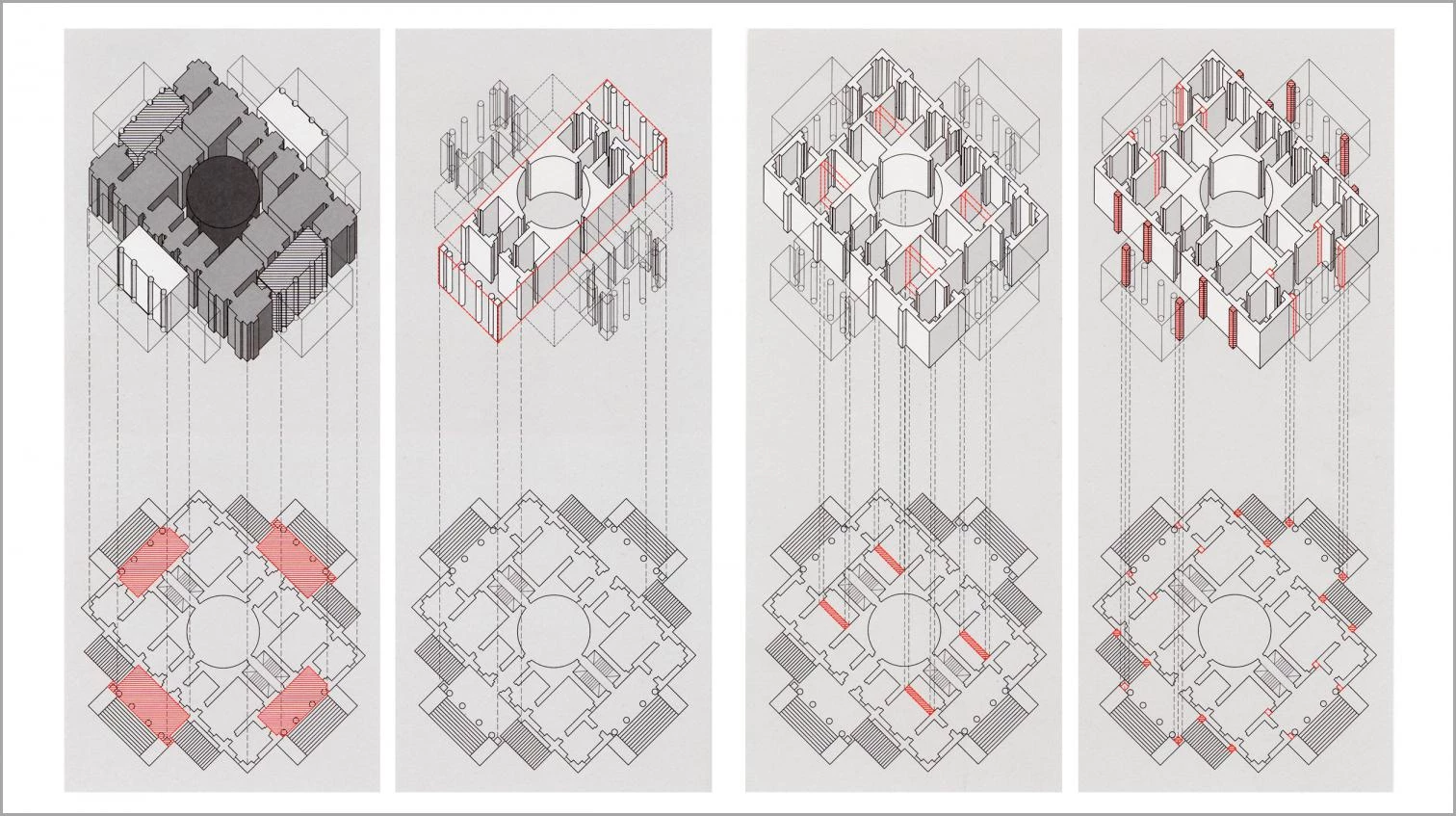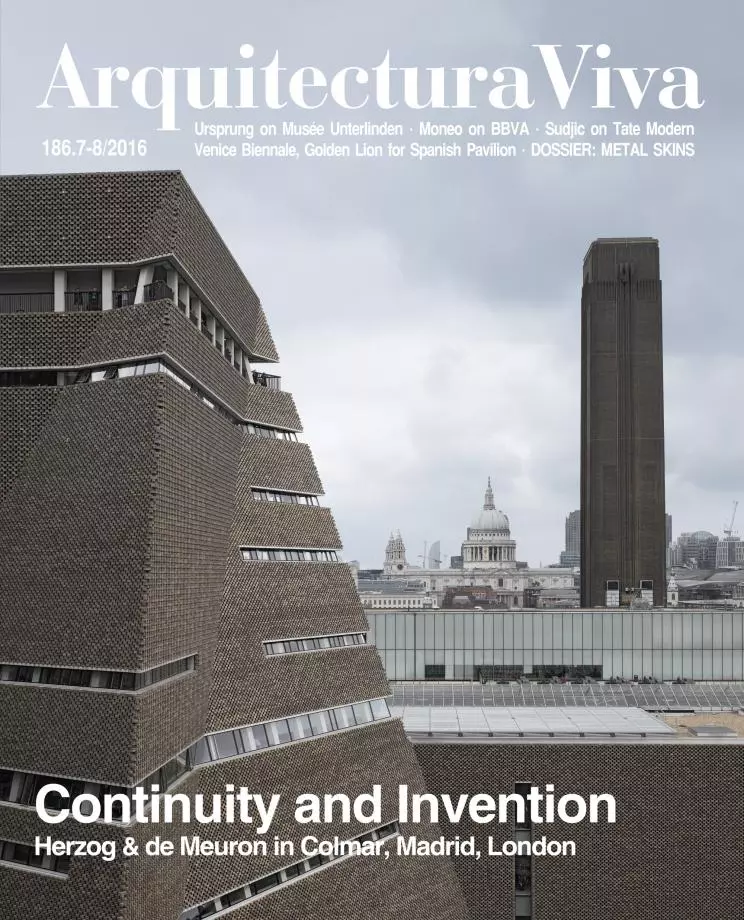
Peter Eisenman offers a transgressive Palladio. Against the traditional view of the Vicenza-born architect, which emphasized the order, serenity, and harmony of his buildings, this in-depth reading of his built, drawn, and written work describes his projects as unstable, inconsistent, and disjointed. Eisenman here employs the same graphic tools of formal analysis that he used in his dissertation, and later in his book on Terragni, to make a detailed examination of twenty works of Palladio – seventeen villas and three ‘palazzos’ – which he groups in three categories: the ‘classical’ villas, where he warns of the impending crisis of their linguistic synthesis; the ‘barchessa’ projects, which extend the villas over the landscape with granaries and other vernacular constructions; and the ‘virtual’ villa, whose examples illustrate the dissipation of this architectural type.
Despite its debt to historians and critics like Wittkower, Rowe, or Tafuri, the book is the work of an architect, and its focus points to the disciplinary pertinence of a close reading of buildings and its representations. In writing it Eisenman puts himself in the tradition of the philosophers who build up their bodies of thought by rereading that of a historical figure, and so for him, writing on Palladio is but a way of developing his own architectural approach. Here one inevitably must acknowledge his extraordinary consistency over time, and the stubborn determination with which he has been faithful to his intellectual project in a professional environment more inclined to the commercial than to the academic. Palladio tried to address the theory and the practice of architecture simultaneously, which explains why he invites so much critical dissection. However, let us not be deceived: this book is not about Palladio, but about Eisenman.
Those of us who were schooled with the Palladio of Wittkower and Ackerman have seen his figure and work repeatedly revised by the historiographic explosion created from the 1960s on by the Andrea Palladio International Center for the Study of Architecture, which has significantly changed the platonic view of villas as isolated and exact objects. This deeper knowledge had defining moments in 1980, with the fourth centenary of his death, and in 2008, with the fifth centenary of his birth; the latter was celebrated in Arquitectura Viva 122 with long articles by Moneo and Oeschlin, and led to a major exhibition curated by Guido Beltramini and Howard Burns whose catalog is now an essential reference.
Eisenman’s work does not belong to this body of research, but to his own literary oeuvre, which here stretches its critical dimension to the limit by unexpectedly starting with the Church of Santa Maria in Campitelli by Carlo Rainaldi, built almost a century after Palladio’s death, but whose compositional disjunctions are traced back to the Venetian. Eisenman thus presents a Palladio who fractures and breaks away from classical codes, but does so with a book which is exquisitely classicist in its tripartite organization, refined typography, and layout rich in symmetries, exacerbated in the reproduction of the panels of the exhibition that showed this work at Yale University: a book ultimately as oxymoronic in content as in its cover.






